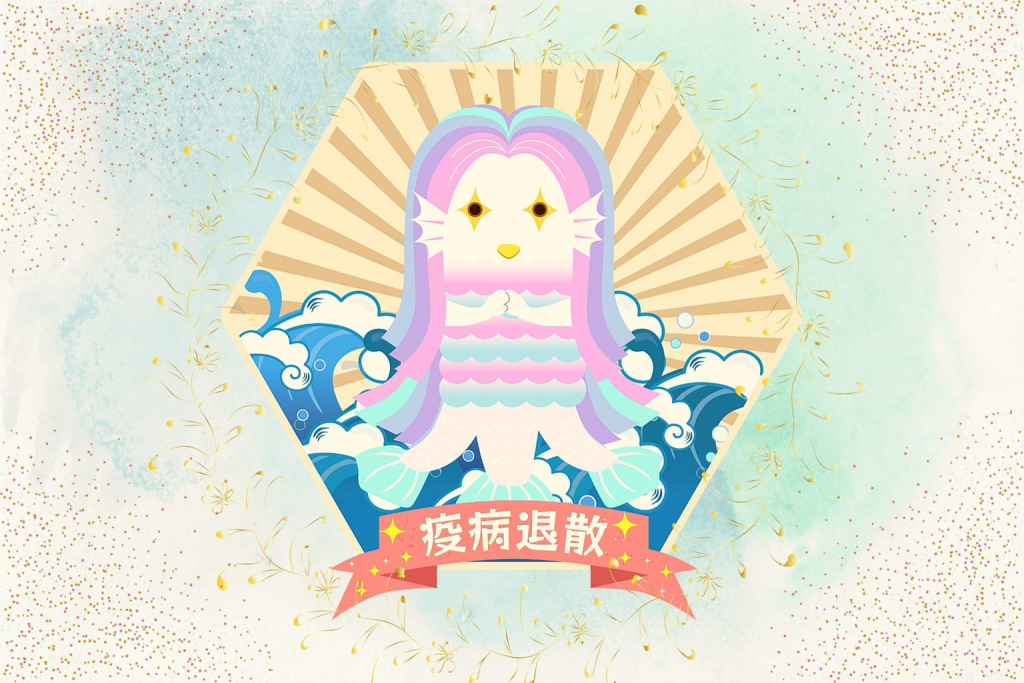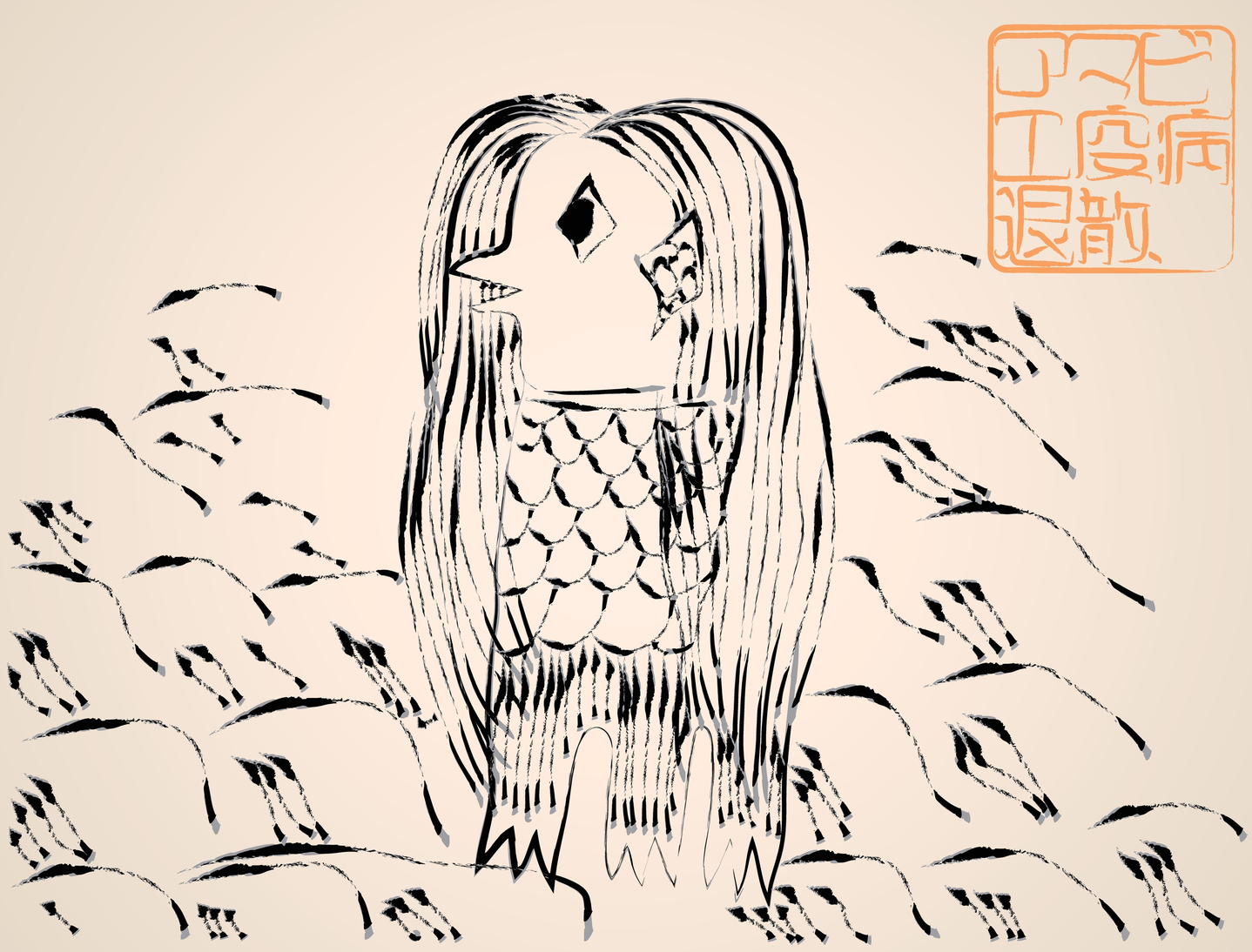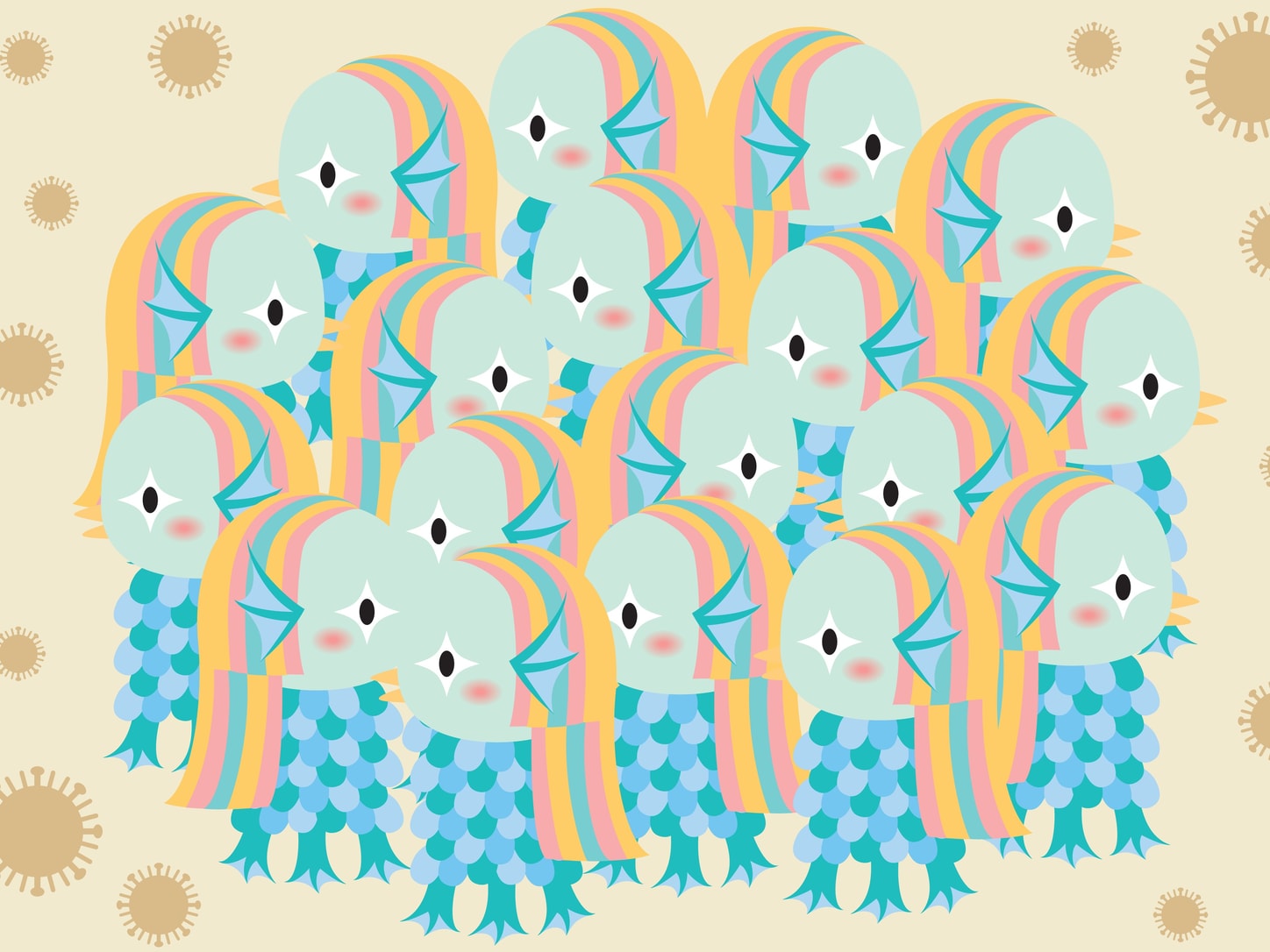Just as the Greeks had Cardea, the goddess of door hinges, in the Edo era, Japanese people had the Amabie, the yokai who could prevent epidemics — provided you get enough people to share and draw it. In 2020, once again, the mythical creature spread in Japan and overseas thanks to the wonders of the world wide web. The trend was covered by the BBC and other respected outlets as soon as it took off. It was quirky — and it was another layer of “cool Japan.”
But what if Amabie told us more about Japanese culture and less about our abilities to hop on the latest meme train?
The Incredibly Brief First Appearance of the Amabie
Much like the kitsune and tanuki, the Amabie is a yokai whose origins lie in Japanese folklore. The first sighting took place in 1846 Higo Province, or modern Kumamoto Prefecture, by a fisherman who had been seeing an odd glowing object in the sea and went to check up on it. According to the legend, the creature — described as being cephalopod-like with three tails and long mermaid hair — predicted half a decade of good harvests but also a devastating epidemic. The Amabie promised it would stop the spread of the virus if the fisherman could get enough people to draw it. And that’s the only time this yokai was “seen.”
Here it’s important to note a key clue in sociohistorical context. Throughout Edo and in the early years of the Meiji Era, Japan suffered quite a few outbreaks of cholera and it’s possible that this “sighting” of the Amabie was a reflection of the very real anxiety at the time that a village could fall victim to the infectious disease. Redrawing of the yokai, however, is an unusual request even for the times. Looking back, these characteristics overlap with the modern internet meme, which had a lot of the coverage of the Amabie back in April affectionately call it the “original Edo meme.” And they could be right!
The Amabie Returns nearly 175 Years Later
Interestingly, the Amabie didn’t resurface in 1918, when the Spanish flu spread around the world like wildfire. But it undeniably is the Japanese symbol of the Covid-19 pandemic. It was used as the mascot for the government’s measures against the coronavirus and you can still spot it at stationery stores decorating various paper items and New Year’s cards. This only comes to show that nearly one year after this whole debacle started, it continues to carry a somewhat profound wish of good health.
So why 2020 and not 1918? Here are a few theories that might explain why the Edo meme returned in force nearly 175 years later.
“The Amabie was as timely as any other good meme and drawing it to share on social media was the best thing to bring people together in a time of absolute isolation.”
1. The prominence of yokai in popular culture
If you’ve consumed any type of manga or anime, you probably came across a few yokai already. Inuyasha, Noragami and Natsume’s Book of Friends are all examples of titles that explore the limitations, or rather lack thereof, of the creatures of Japanese folklore in both traditional and modern interpretations. Even one of Nintendo’s biggest franchises, Pokémon, was largely based on yokai. In 2016, their mobile game used AR to bring an uber-realistic dimension to the Pokémon world by giving the players the experiences of “finding” the creatures in the wild, much like yokai would be spotted in times long past.
2. A perfect example of Japan’s adored mascots
In a completely different context, one might look at the drawing of the Amabie and think it was a doodle drawn by some kindergartner. But the weird “design” aligns all too well with those of Japan’s popular mascots. It’s “grotesquely cute,” which is the latest trend in mascot design, if you can even believe that’s a thing. Something like the Amabie wouldn’t be too farfetched to see representing a Japanese rural village with a particularly rich fish-centric cuisine, for example.
3. A feeling of disconnection stronger than ever
The internet is a great place and it has brought a lot of joy during this period of social distancing. However, it’s this very feeling of being connected all the time that made the pandemic affect our psyche much more than it might have in 1918. The Amabie was as timely as any other good meme and drawing it to share on social media was the best thing to bring people together in a time of absolute isolation, not so different from the Tik Tok dance routines or Twitter trends of the world.
The pandemic has been anything but kind to societies around the globe. The explanation behind this fun internet phenomenon is likely a healthy mix of all of the above along with, just like in 1846, the anxiety of suffering or having somebody we love suffer from Covid-19.
Stay safe if you must go out, stay home if you can.











